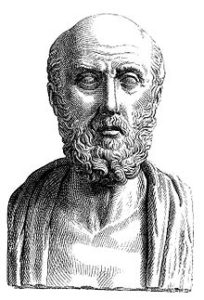
Ever get tired of the ongoing discussions about depression…? What causes it, and what actually helps people feel better? How many people have you heard complain that they don’t believe in psychiatric medicine because “it doesn’t work?” People who say they feel like guinea pigs and are fed up…?
Or…maybe you’re one of those people…? Who are sick and tired of feeling crummy most of the time? Without the energy or initiative to get through a day…or even get out of bed? …Who are disillusioned with psychiatric prescriptions and therapy? Who feel resigned to drag through life without hope…?
Well, take heart.
For you, hope is emerging and taking hold. Neuroscience is uncovering more and more information that has eluded us since the beginning of man.
In the last 15 years or so, breakthroughs led to experimental trials, then grew into more widespread use that seemed to be turning a corner on this long, arduous, uphill climb.
Barbaric treatments that all but put a depressed person out of commission gave way to less overwhelming medications and therapies that only helped some depressed patients. Suicides  continued or increased.
continued or increased.
But research pushed forward. Then, a small group tried an anesthesia medication on depressed patients and…
Eureka! They felt better. And a new era began.
More about that in a moment… but first, let’s take a look back…
Over 5000 Years to Crack the Depression Code
Since the beginning of civilization, people have sought a solution to depression.
As far back as 2000 BC, in the ancient civilization of Mesopotamia, where psychiatric disorders were believed to be caused by demonic possession and were treated by priests rather than physicians.
Then, around 400 BC, Hippocrates, known as the father of medicine, called it melancholia and  theorized its cause was an excess of black bile in the spleen. He gets credit for being the first physician to declare that illness was caused by physical problems in the body rather than gods or spirits.
theorized its cause was an excess of black bile in the spleen. He gets credit for being the first physician to declare that illness was caused by physical problems in the body rather than gods or spirits.
Hippocrates offered treatments like blood-letting, among other things. But … he was trying to find help for his patients.
These meandering beliefs and others have accompanied the quest to understand the cause of depression and to find remedies that actually work.
IV Ketamine is Depression’s BREAKTHROUGH
It’s only now, in the 21st century, that breakthroughs, knowledge, and effective treatment are emerging and gaining momentum.
We’ve learned a ton about ketamine in the past few years, and it’s important to keep it straight. Really understand it.
For instance, we’ve learned that it turns on mRNA which switches on DNA to infuse dynamic growth into the brain-derived-neurotrophic-factors (BDNF).
And that the BDNF is like a compost of sorts, that richly empowers the neurons (brain cells) to proliferate densely with branches and connections that double, triple, quadruple and turbo-charge the development of more synapse connections and branches.
We’ve learned that IV ketamine slides G proteins off the lipid rafts they’re piled upon in the cell  membrane…and that gives the Gs the freedom to enhance the transmission of signals throughout the brain, which reverses depression. And we’ve learned that ketamine causes these things to take place fast. Within hours.
membrane…and that gives the Gs the freedom to enhance the transmission of signals throughout the brain, which reverses depression. And we’ve learned that ketamine causes these things to take place fast. Within hours.
We’ve learned it does all this in minuscule doses, much smaller than the doses used in anesthesia.
IV ketamine infusions have brought a dawn of new hope for patients with psychiatric mood disorders, and there’s more.
In addition to all this, ketamine also stops – erases – suicidal thoughts in 4 hours or less.
We’ve never had any treatment that could do that.
IV ketamine treatment is saving lives. Every single day.
And now, the hardworking and dedicated neuroscientists who’ve been studying, testing, and researching ketamine around the globe have made a breathtaking discovery.
Ketamine’s Rapid Relief of Depression: It BLOCKS Neuronal Bursts in the Lateral Habenula (LHb)
We now know that IV ketamine blocks the bursts of brain cells in the lateral habenula that drive depression. This area is often called the “anti-reward” area of the brain because it prevents the reward area of the brain from functioning properly.
Ok, yes, I get that it sounds like Greek. Lateral habenula…who ever heard of it?? It’s not Greek, it’s Latin. Stay with me.
The lateral habenula is located deep in the center of the brain. And there are actually two. A right lateral and a left lateral habenula…connected to the hindbrain by nerve pathways. When viewed from above, this system looks something like a horse bridle, if the hindbrain is the horse’s nose, and the pathways are reins.
For this reason, the structure the nerve pathways connect to is named after the Latin root word for “rein.”
But that’s where the reference to equestrian activities ends. The habenulae, as in both of them, are part of the limbic system, which regulates emotion, motivation, learning, and memory.
Now, if you do something hoping for and expecting a reward — and the reward doesn’t happen — neurons in the LHb burst in rhythmic patterns to dampen the sense of reward. The idea is to help the brain understand to let go of the hope of reward and move on to something else.
The Problem with Bursting Cells
But here’s the problem. When you’re depressed, those bursting cells go overboard, bursting far too much and too fast. And rather than just dampen expectation of reward, their bursting dampens everything. It renders you hopeless. Until you’re in despair.
A team of neuroscientists led by Hailin Hu, did a series of very elegant studies to see the effect of ketamine on the lateral habenula.
And it was pretty spectacular.
Working with laboratory animals, the team induced a depression-like condition on some of them. The depressed ones moved into despair so severe that they didn’t even try to survive in a severely stressful situation — they just gave up.
In this condition, researchers observed that a small portion of the neurons in their LHb fired in repetitive bursts in far greater numbers and speed than the LHb of normal, non-depressed mice. This overly excessive bursting of anti-reward rapid fire worsened their depressive condition.
Researchers also found that when the mice had gone through severely stressful experiences,  they also had these quick rapid-fire bursts in far greater numbers than mice who were comfortable.
they also had these quick rapid-fire bursts in far greater numbers than mice who were comfortable.
So severe depression and severe stress both resulted in an overabundance of rapid-fire anti-reward signals that drowned out any benefit from the reward center in their brains.
But look what happened: After researchers dosed the stressed, depressed, despairing mice with ketamine, the rhythmic bursting slowed way down… to almost normal. Which allowed the reward center to shower the mice with serotonin and dopamine and they quickly felt better.
Then, to test that response, the researchers forced those bursting cells to fire, and even when they did, the mice who had ketamine still showed no signs of depression.
Exciting, isn’t it??
Ketamine’s Rapid and Robust Antidepressant Effect
So we’re beginning to understand how ketamine can act so fast. It releases the reward areas from those  strong anti-reward signals. And the reward signals of dopamine and serotonin are able to find their mark and make you start feeling better very quickly.
strong anti-reward signals. And the reward signals of dopamine and serotonin are able to find their mark and make you start feeling better very quickly.
All this suggests that as more medications for mood disorders are developed, medications that block the LHb anti-reward bursts could also effectively relieve depression. That opens all kinds of new ideas for researchers to pursue for depression relief.
We’re finally getting down to what really works. It’s about time.
We’re finding new solutions for mood and anxiety disorders.
At Innovative Psychiatry, we’re learning more all the time. This new study has opened more doors and windows about another extraordinary benefit of IV ketamine treatment. The power to block the bursting, to stop the work of the anti-reward bursts, means that it can lift the brakes that have prevented you from feeling showered with relief, joy, and gratitude. When burst firing stops, you begin to flourish.
It’s just one more way ketamine works to smash depression.
If you suffer from depression, anxiety, panic disorder, social anxiety, bipolar disorder, PTSD, OCD, or suicidal thinking, IV ketamine treatment can relieve you so you can live a fulfilling and productive life again. You can enjoy initiative, creativity, motivation, joy, resilience… and you can function.
We see 80% success in treatment-resistant mood disorders. And 80% is the best result seen from any treatment known today.
Tired of the sadness, numbness, anxiety, fear, emotional pain, mood swings, or thoughts of death? Call us. We can help you feel better, live better…and have hope for the future.
 To your best self in the months ahead,
To your best self in the months ahead,

Lori Calabrese, M.D.